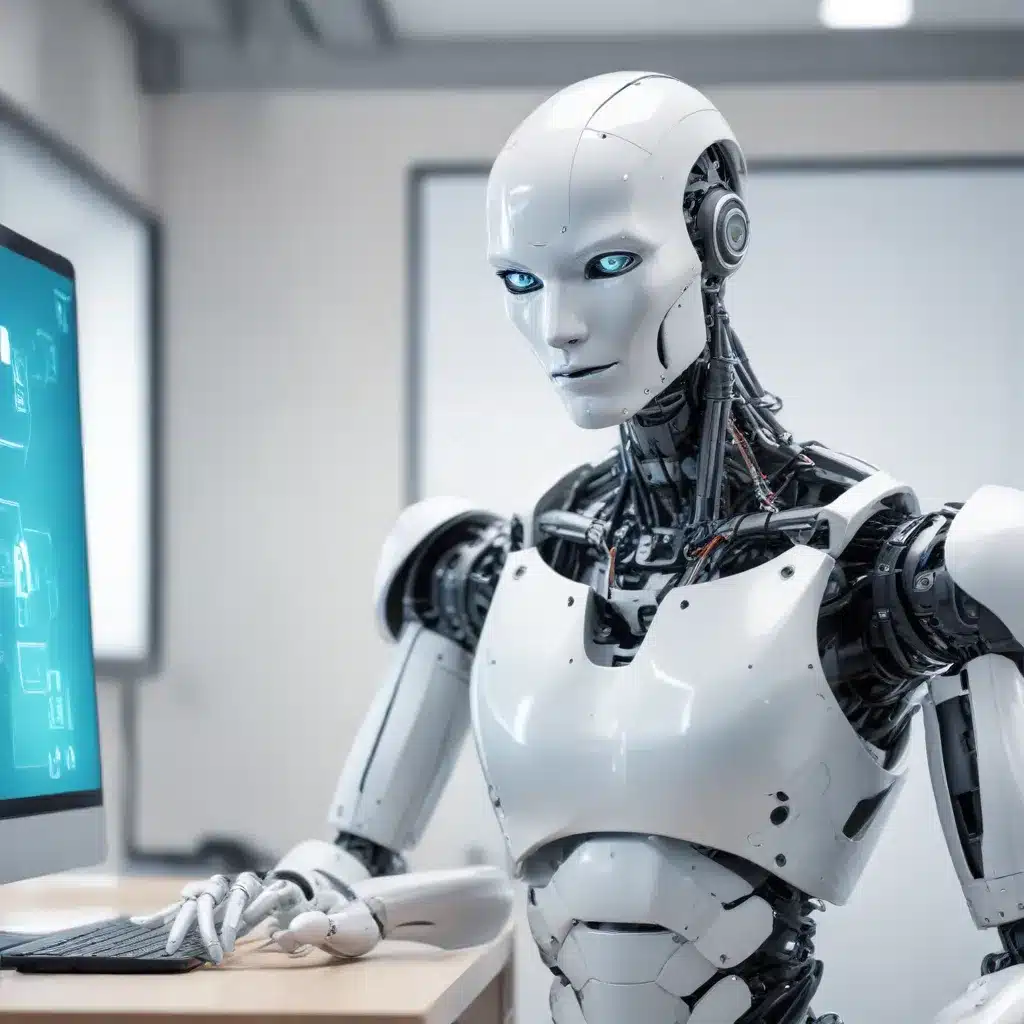
Enhancing IT Productivity with Robotic Process Automation and Artificial Intelligence
Unlocking the Power of Automation and AI in the IT Landscape
As an experienced IT professional, I’ve witnessed firsthand the transformative impact of robotic process automation (RPA) and artificial intelligence (AI) on the technology industry. These cutting-edge solutions are rewriting the story of work, empowering IT teams to enhance productivity, efficiency, and resilience like never before.
In today’s fast-paced digital landscape, organizations are constantly seeking ways to streamline their operations, reduce manual errors, and free up valuable human resources. RPA and AI-powered technologies are proving to be the game-changers that can help achieve these goals and propel businesses forward.
Robotic Process Automation: The Automation Revolution
Robotic process automation is a software technology that allows the creation of software robots, or “bots,” to emulate human actions and interactions with digital systems. These digital workers can handle a wide range of repetitive, high-volume tasks, from logging into applications and extracting data to filling out forms and generating reports.
The benefits of implementing RPA are numerous and well-documented. RPA can drive rapid, significant improvements to key business metrics, including cost savings, increased accuracy, enhanced compliance, and improved employee satisfaction. In fact, 63% of global executives view RPA as a major component of their digital transformation efforts.
One of the standout features of RPA is its ability to integrate with legacy systems that lack APIs or advanced integration capabilities. This makes RPA a valuable tool for organizations looking to automate workflows and processes that would otherwise be difficult or time-consuming to streamline manually.
AI: Unlocking the Next Generation of Automation
While RPA is a powerful tool for automating rules-based, repetitive tasks, the combination of RPA and AI takes automation to new heights. By incorporating advanced AI capabilities, such as machine learning, natural language processing, and computer vision, RPA robots can now handle more complex, cognitive processes that require higher-order skills.
AI-powered RPA can tackle tasks like understanding unstructured data, interpreting text, and engaging in natural language conversations. This expanded skill set allows RPA to automate a broader range of business and IT processes, from document processing to customer service chatbots.
Moreover, AI is enabling the discovery of automation opportunities through process mining and the application of machine learning models to automated decision-making. This scientific approach helps organizations build a robust automation pipeline and ensure that AI-powered automation is integrated seamlessly into day-to-day operations.
The Path to Becoming a Fully Automated Enterprise
Successful implementation of RPA and AI-powered automation requires a well-structured, strategic approach. The most effective enterprises follow a three-stage journey:
-
Laying the Foundation: Start with pilot projects and quick wins to demonstrate the benefits of automation and build momentum within the organization.
-
Scaling Automation: Focus on top-down, cross-enterprise opportunities that have a significant impact, leveraging automation to transform key business processes.
-
Becoming a Fully Automated Enterprise: Capture automation opportunities across the entire organization, creating a culture of innovation and continuous improvement.
By following this path, organizations can unlock the full potential of RPA and AI, transforming their IT operations and unlocking unprecedented levels of productivity, efficiency, and agility.
Overcoming the Challenges of Adoption
While the benefits of RPA and AI are clear, the adoption of these technologies is not without its challenges. Technical limitations, such as the need for massive training data and difficulties in generalizing algorithms, have been addressed through recent innovations. However, organizations must also navigate issues related to explainability, bias, data privacy, and security.
Moreover, the successful integration of automation and AI requires a holistic approach, addressing people, data, technology, and process readiness. Adoption rates vary significantly across industries and countries, with the finance, automotive, and telecommunications sectors leading the way, and Europe lagging behind North America and Asia.
The Future of Work: Embracing the Human-Machine Collaboration
As RPA and AI continue to reshape the workplace, the nature of work itself is undergoing a profound transformation. While some occupations will decline, others will grow, and many more will change, with machines and humans working together in new ways.
Our research suggests that around 15% of the global workforce, or 400 million workers, could be displaced by automation in the period 2016-2030. However, the creation of new jobs and the growing demand for work due to factors such as rising incomes and increased spending on healthcare and infrastructure, will more than offset these losses.
The future of work will require a significant shift in workforce skills, with a growing demand for advanced technological skills, social and emotional competencies, and higher cognitive abilities. Governments, companies, and individuals will need to collaborate to ensure a smooth transition, investing in education, training, and reskilling programs to prepare the workforce for the challenges and opportunities ahead.
Embracing the Automated Future
As an IT professional, I’m excited about the transformative potential of RPA and AI. These technologies are not only improving business metrics and driving digital transformation but also unlocking new possibilities for societal progress, from healthcare breakthroughs to climate change solutions.
By embracing automation and AI, IT teams can free themselves from repetitive, time-consuming tasks, allowing them to focus on more strategic, innovative work. Moreover, the integration of these technologies into day-to-day operations can enhance resilience, reduce errors, and improve compliance – all critical factors for maintaining a competitive edge in the digital age.
The journey towards becoming a fully automated enterprise may come with its fair share of challenges, but the rewards are well worth the effort. By working closely with business leaders, IT professionals can harness the power of RPA and AI to revolutionize their organizations, enhance productivity, and pave the way for a brighter, more efficient future.
To learn more about how https://itfix.org.uk/ can help your organization unlock the full potential of automation and AI, I encourage you to explore our comprehensive suite of IT solutions and services. Together, we can navigate the transformative landscape of technology and empower your team to achieve greater heights of success.












